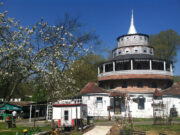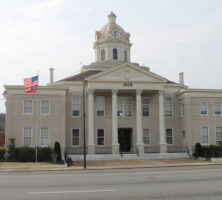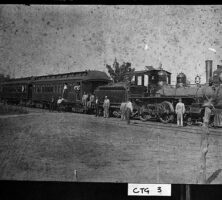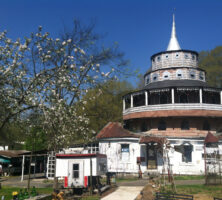Chattooga County, in northwest Georgia, is the state’s ninety-third county.
The 314-square-mile county borders Alabama and was established from parts of Walker and Floyd counties in December 1838 by the state legislature. The county is named for the Chattooga River, which flows through the area and is the smaller of two Georgia rivers bearing that name. (The larger Chattooga River forms part of the state’s northeast border between Georgia and South Carolina.) The county may be best known as the longtime home of folk artist and country philosopher Howard Finster and as the place where Sequoyah developed a written alphabet for the Cherokee language.
The county was originally inhabited by Creek Indians and then Cherokees; the first white men in the area were fur traders, hunters, and traveling missionaries, followed by Revolutionary War (1775-83) soldiers. The whites lived in fairly peaceful coexistence with the Indian population until 1829, when gold was discovered in north Georgia. In one of the saddest chapters in America’s history, the newcomers, backed by federal and state authorities, used force to dispossess the Cherokees of their land and then distribute it to white settlers in the 1832 Cherokee land lottery.
Chattooga’s Cities
There are four incorporated cities in the county: Lyerly, Menlo, Summerville (the county seat), and Trion. The county’s largest landowner and major promoter in the nineteenth century, John Fluker Beavers, sold ninety acres for the establishment of the county seat in March 1839. Originally called Selma, the seat was renamed Summerville in 1840 in recognition of its mild climate. The town was slow to develop, showing active growth only after the long-awaited arrival of railroad service to the county in the late 1880s. The county courthouse, built in 1909, was placed on the National Register of Historic Places in 1980.
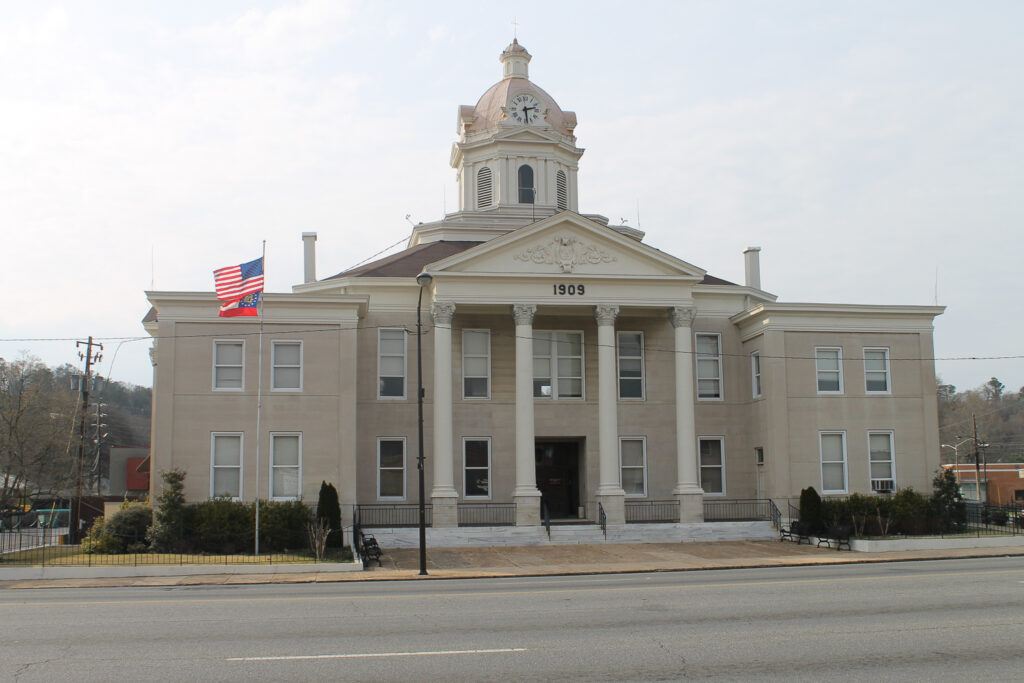
Lyerly was incorporated in 1891 and named after Tennessee bank president Charles Abner Lyerly, who had invested in real estate in the county. Lyerly was the first town in northwest Georgia to ship poultry to markets in other states.
Menlo was incorporated in 1903, although it had existed since 1883. Its founder, Captain Andrew J. Lawrence, named the town in honor of inventor Thomas Edison, whose workshop was located in Menlo Park, New Jersey. Lawrence formed the Edison Land Company to sell lots in town. In 1951 Menlo was awarded second prize in the Georgia Power Company’s Better Hometown contest.
Trion, incorporated in 1869, was named after Trion Factory, the first cotton mill in northwest Georgia. Built in 1845-47, the mill was named by its three founders to commemorate their partnership. In 1858 it served the community as a hospital during an outbreak of typhoid fever. Unlike many other cotton mills, the factory was spared by Sherman’s troops during the Civil War (1861-65), reputedly because one of its owners, Andrew Perry Allgood, was a Union sympathizer who hosted General Sherman overnight in October 1864. Allgood received protection papers from Sherman in exchange for a promise to close the mill for the duration of the war. Ironically, in 1875 the mill did burn to the ground, raising questions about whether the fire had been set by people angered by Allgood’s Union sympathies. The mill was rebuilt and eventually became Mt. Vernon Mills Incorporated, the world’s largest indigo denim plant.
Economy and Population
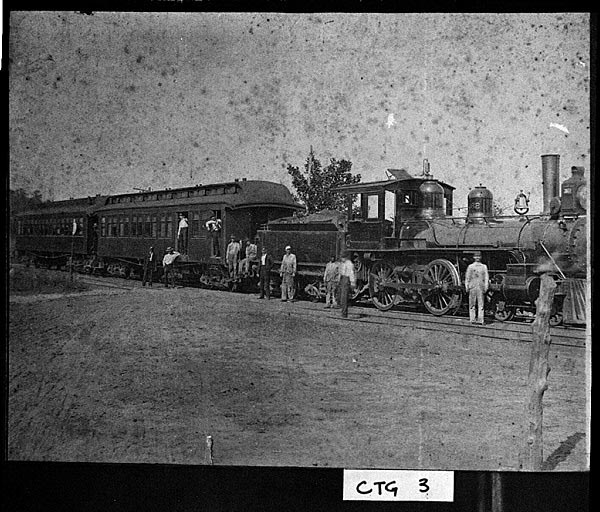
During the nineteenth century, small farms occupied most of the area. By the end of that century, farmers had discovered that peaches grew well in Chattooga County, and by 1906 there were orchards in every part of the county. Unfortunately, although highly profitable for a number of years, the value of peaches as a cash crop dwindled to almost nothing by the mid-1920s. In the meantime, county farmers had started growing strawberries, shipping them to markets as far away as Cincinnati, Ohio, by a “Berry Special” daily train operated by the Chattanooga, Rome, and Southern Railroad. (The train picked up berries in several Chattooga County locations and took them to Chattanooga, Tennessee, to be connected with a train going north.) Other agricultural products, including pecans, tobacco, and poultry, were mainstays of the county’s economy, as well as the pulpwood that was sold to paper mills. Iron ore (discovered in the 1880s), coal, marble, and chert (used for paving) were extracted from the county’s mines.
According to the 2020 U.S. census, the population of Chattooga County is 24,965, a modest decrease from the 2010 population of 26,015.
Highlights
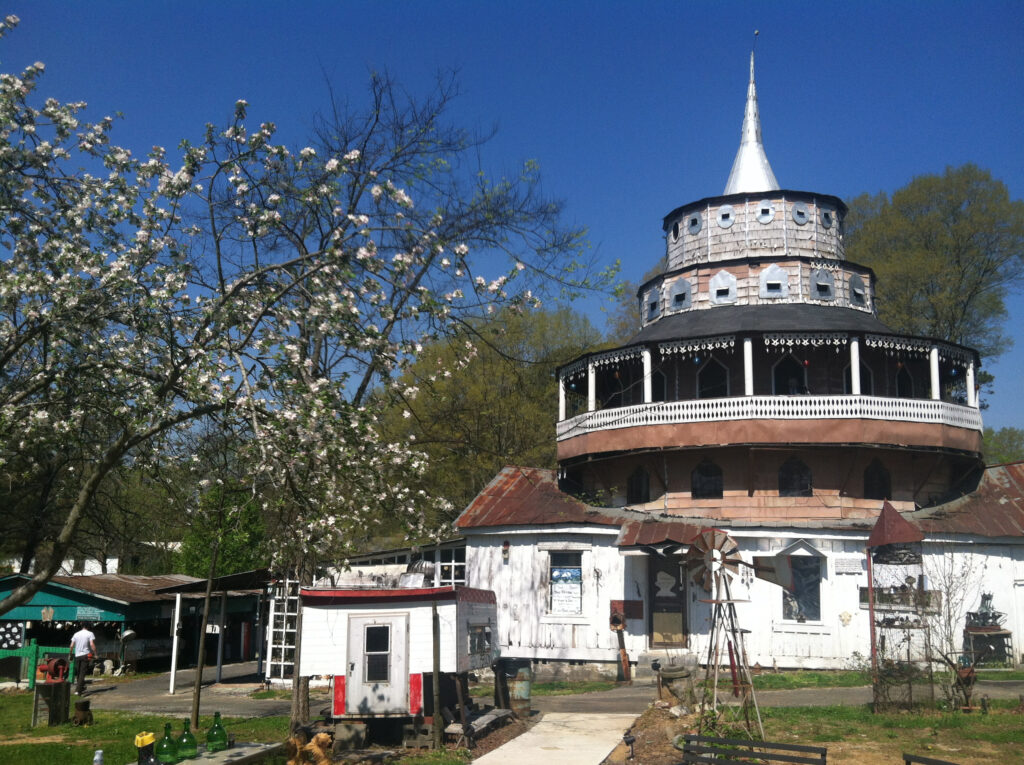
Annual events include Finster Fest, an arts and musical festival, in May, and the Sum-Nelly Arts and Crafts Fair in October. Recreational opportunities include the Georgia Pinhoti Trail, a ridgeline trail for hikers; mountain biking and equestrian activities; and Camp Juliette Low, a summer camp in the Little River area for girls.
Notable residents have included Finster, Sequoyah, and the attorney Bobby Lee Cook. Among the most charismatic trial lawyers of the late twentieth century, Cook represented a wide array of defendants that included Rockefellers and Carnegies, moonshiners and labor organizers, and Wayne Williams, who was convicted of murder in the Atlanta Youth Murders case. In addition to practicing law, Cook also served as a member of the Georgia House of Representatives (1949-50), a state senator (1957-58), and a judge.


